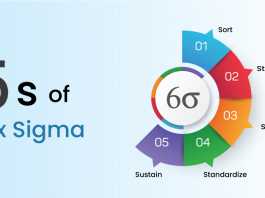Essential Lean Tools for Creating Effective Processes
Companies around the globe have saved millions and even billions of dollars in the past few decades by integrating Lean and Six Sigma techniques into their systems.
In this blog, we will discuss the top...
Understanding the Primary Goal of Six Sigma Implementation
Six Sigma is a concept you've undoubtedly learned of regarding highly organized and profitable firms, but it might not be something you can readily identify. Six Sigma is certainly something you can hear about...
Understanding and Reducing the Eight Lean Wastes
The main focus of the Lean philosophy is to eliminate waste from all processes involved in the workplace. Waste hampers growth and takes up time and resources in an organization and from the employees. So,...
Understanding Six Sigma in Healthcare: Concepts and Benefits
Six Sigma is a methodology that utilizes statistical tools and techniques to improve processes and reduce variability. As a result, Six Sigma can improve patient outcomes, increase efficiency, and reduce costs in healthcare.
In this...
Quality Control Inspector Roles and Responsibilities Explained
Ensuring the highest quality of products and services is crucial for business success. This is where the role of a Quality Control Inspector becomes essential. These professionals are responsible for examining products and processes...
Root Cause Analysis Template: Everything You Need to Know
All organizations have problems from time to time that they need to solve. They can be employees' productivity levels, defects in the software, minor issues with the organization's processes, and more. All these problems...
PRINCE2 vs Six Sigma: Understanding the Differences
As a project manager, you may have to face these challenges while working on a project. The responsibilities of carrying out a project lie solely on the shoulders of the project manager. Therefore, without...
Effective Six Sigma Defect Reduction Techniques
Six Sigma is a leadership strategy guided by evidence utilizing particular methods and methodologies that contribute to fact-based decision-making. The DMAIC (Define–Measure–Analyze–Improve–Control) approach to addressing the fundamental issue of reducing procedure variability is something...
What is Minitab? Understanding Its Advantages and Uses
Nowadays, data can be seen everywhere; but the question is, are you really taking advantage of it? In this relate, Minitab statistical software helps you look at the previous and current data trends to...
Discover the Benefits of Implementing Lean Six Sigma
The Six Sigma methodology concentrates on reducing difficulties by analyzing the methods that generate them. The final aim is to decrease process errors to 3.4 per one million possibilities. But to find the actual...


























